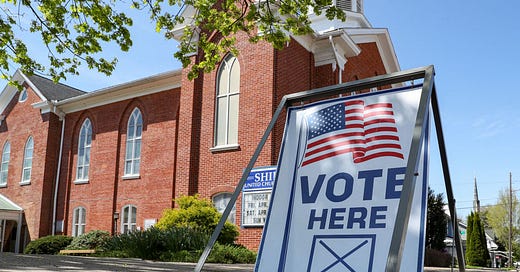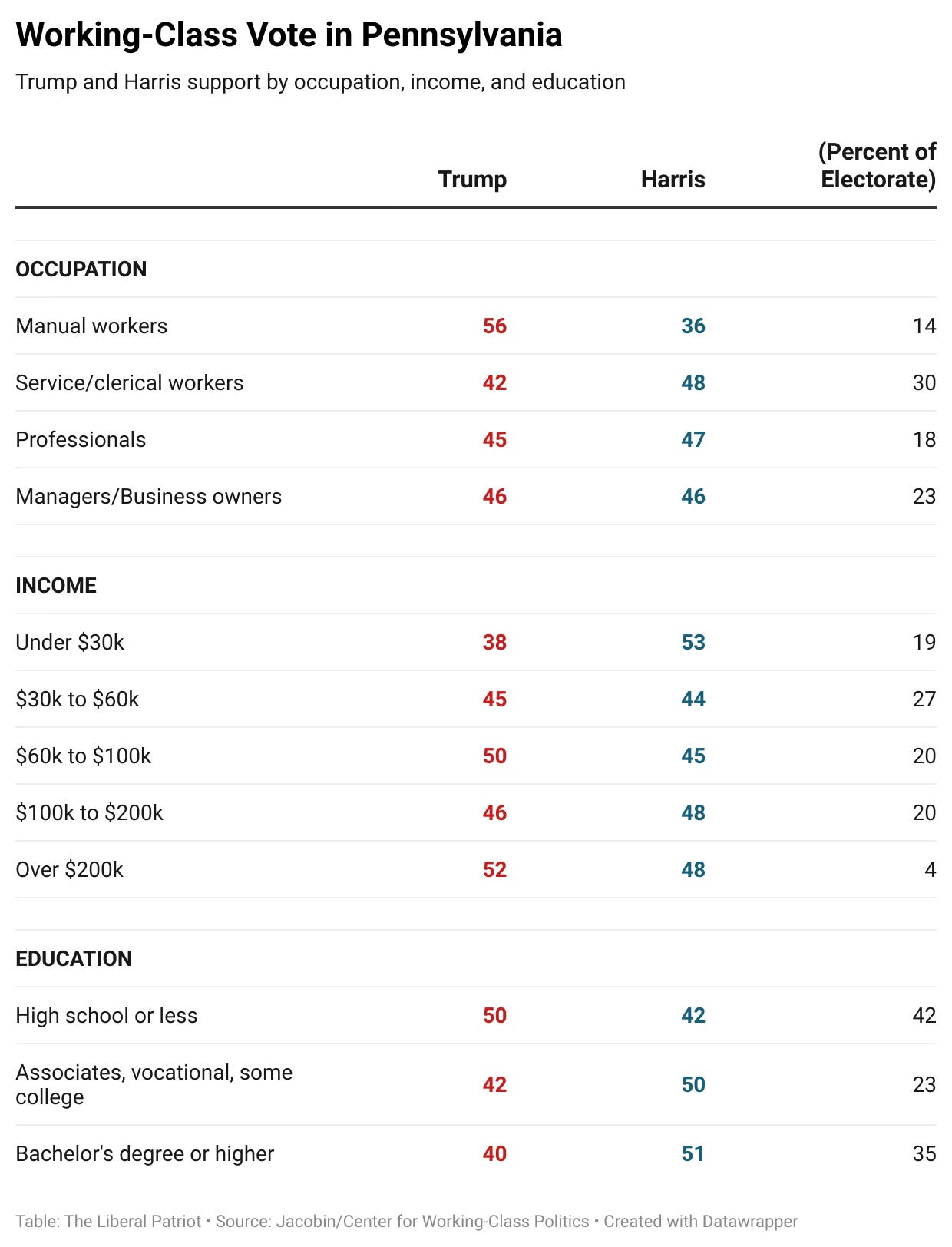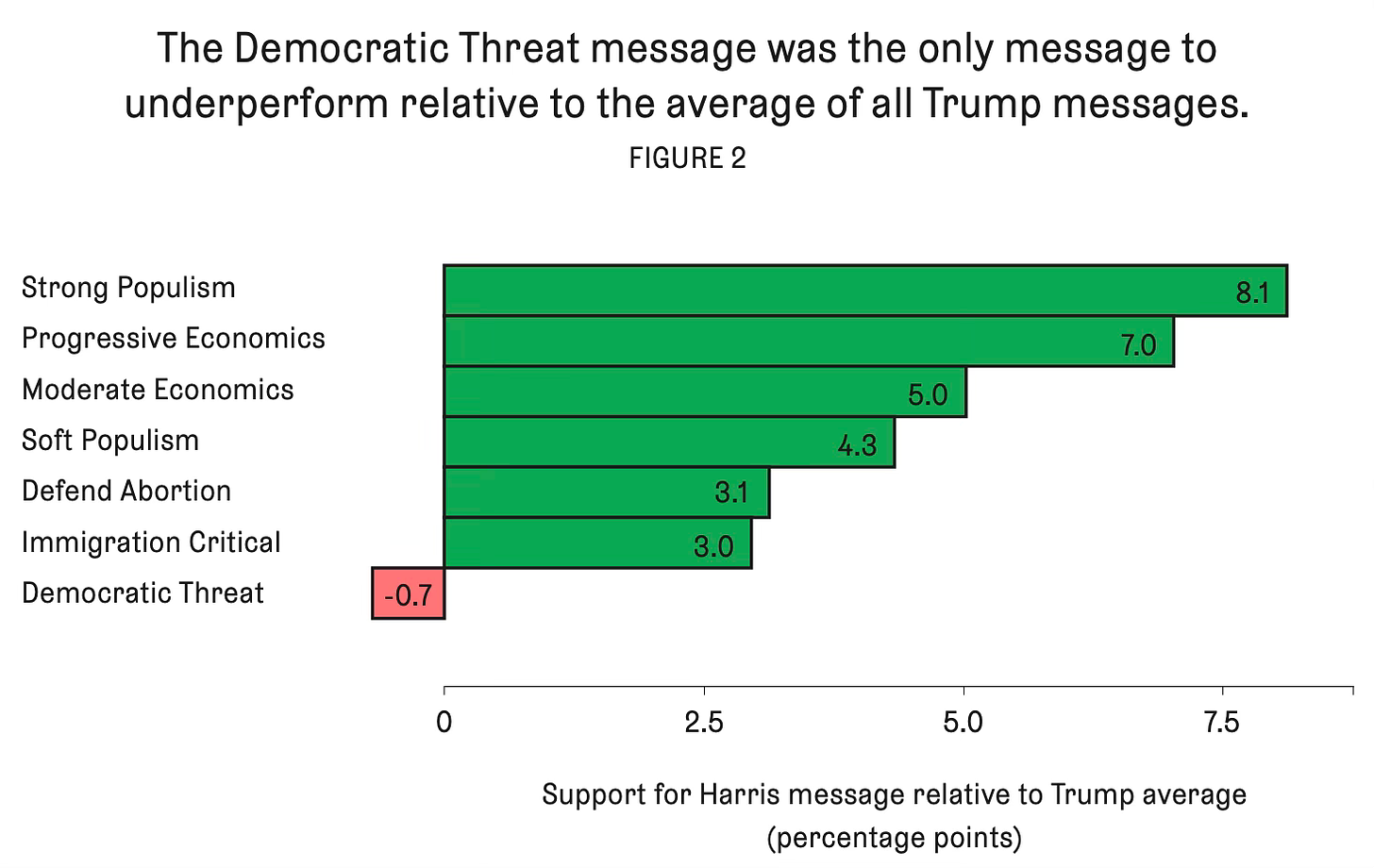Both Parties Ignore the Working Class Down the Stretch
The final week of the election comes down to culture wars and a fight over democracy, not working-class economic needs.
In the end, Democrats and Republicans decided to fight it out one last time over culture war abstractions and democracy—not the economy. Trump’s final messaging centers on Harris’s support for transgender surgeries for prisoners and open immigration, along with a head-scratcher MAGA rally featuring unsavory characters saying dumb things that his campaign had to walk back. Harris’s final campaign message is all about Trump’s threats to democracy and his supposed “fascism,” along with a head-scratcher gaffe from Joe Biden insulting voters that the White House and campaign had to walk back.
These aren’t unimportant issues in the election. Character, culture, and democracy will clearly play some role in the final outcome, and voters on all sides have legitimate concerns about both candidates in relation to these matters.
But with less than a week to go in the election, what’s missing? The economy, the single most important issue for most Americans—particularly working-class voters.
Both campaigns of course have advertising and “plans” talking about the economy. Still, you don’t hear either Trump or Harris, or their surrogates, saying much if anything in the final days about what the two presidential candidates really want to do on economic security, jobs, benefits, costs, and other basic material needs that occupy the minds of normal voters.
Trump and Harris are far more concerned with elevating fear and disdain for the other side than with making a case for their own economic policies. Consequently, the lack of an economy-focused campaign centered on the working class from either camp explains a lot about why the race is neck-and-neck with no obvious winner to predict a week out.
To help understand this dynamic, a new research project conducted earlier this month in Pennsylvania by Jacobin, the Center for Working-Class Politics, and YouGov provides some fascinating data on how the election is breaking out among working-class voters—using a more comprehensive examination of class than is typically employed—and examines the utility of various campaign approaches to these voters.
The table below shows the Trump and Harris vote along occupational, income, and education lines (which are traditionally used by researchers to indicate “working-class” due to years of comparative data on voting based on non-college and college-educated status.)
Looking at traditional education cuts, Harris enjoys a big lead in PA with college-educated voters (+11) and a smaller lead among those with some college education (+8), while Trump holds a similar lead among those with a high school education or less (+8).
Perhaps more interesting are the findings by occupation and income. Trump holds a whopping 20-point lead with manual workers and is tied with Harris among managers and business owners. In comparison, Harris enjoys a small 6-point margin with service and clerical workers and a slight 2-point lead with professionals. Trump also enjoys narrow leads in PA with middle-income voters in the $30k to $100k range and with the richest voters earning more than $200k per year. Harris, in contrast, is up by 15 points among the lowest income voters and ahead just slightly among the upper-middle and professional classes with earnings of $100k to $200k annually.
Notably, the study also tested a full menu of campaign messages articulated by Harris and Trump over the past few months. What did the researchers uncover? Economic populism works better with PA working-class voters than right-wing culture wars and left-wing democracy messaging.
Some key findings from the report are listed below, followed by a chart showing the relative strength and weaknesses of different approaches (messages tested are listed in the back of the report):
All populist and economic-centered messages outperform those that focus on immigration and abortion, and they dramatically outperform messages foregrounding Trump as a threat to democracy. These results hold across partisan lines and largely across class lines, measured by occupation, education, and income…
Messaging around Trump as a threat to democracy underperformed all other Harris messages among virtually every group. Overall, Strong Populism and Progressive Economics outperformed Democratic Threat messaging by 9 and 8 points, respectively [see chart below]…
The “enemies” typically identified in right-wing populism—media organizations, universities, and unions—are not as broadly disliked as economic and political elites, including large donors and lobbyists. This underlines the electorate’s receptiveness to left-wing populist messaging.
Obviously, the groups sponsoring this research favor a more economic-focused, populist approach to organizing blue-collar and other working-class voters.
Regardless of this preference, it’s striking to find that the core messages of both campaigns at the end of the 2024 cycle—Harris’s message about fascism and democratic erosion and Trump’s smorgasbord of anti-elitist, anti-woke charges—essentially play to their respective partisan bases rather than target the all-important bloc of persuadable working-class voters.
It’s too late now to do much about this. The time for persuasion is over with only GOTV and vote counting left to do in the final days.
But looking at these numbers, whichever candidate ends up on the losing side in Pennsylvania next week may come to regret their decision to downplay working-class economic policies in favor of the partisan cultural obsessions of college-educated voters.








Come on Ruy. Far from abandoning the working class, Trump's MSG appearance was 100% about the working class. How many hedge fund guys do you think were there? How many plumbers and firemen and electricians and other working-class people from Queens, the Bronx, Brooklyn and Jersey were there? They FINALLY got a chance to have a New York voice. The second thing to consider is that I think to a large part, the working class has probably voted in a MUCH higher % of the GOP than the GOP as a whole. I think all these early votes, all the leads built by the 20-25% of first time R voters? I think that is HEAVILY working class. Rs know they can turn out the country club types on election day.
So, no, you're wrong on this one. Trump indeed is totally working-class and the NV results show that the "service workers," particularly the culinary union, who has ALREADY TOLD pollster Rich Baris that Trump would win NV, are in lock step with Trump. I've said this for two months: Trump wins the pop vote by 1.5% and wins a floor of 312 EVs, and every day of early voting is proving me correct.
I believe this has been the most vile, fact-free campaign season in my lifetime, and I've been around since FDR/Dewey. Of course, I wasn't taking notes at the time, being just eight months old, but I remember Eisenhower/Stevenson and all the elections thereafter. I can't remember any previous campaign claiming that its opponent presented an existential danger to the Republic, unlike both of the current campaigns -- and although pandering in the form of uneconomic tax cuts and impossible promised benefits aren't new, the scale and gaudiness are unprecedented.
Buckle up, America. It's been a bumpy eight years, and it's going to get worse.